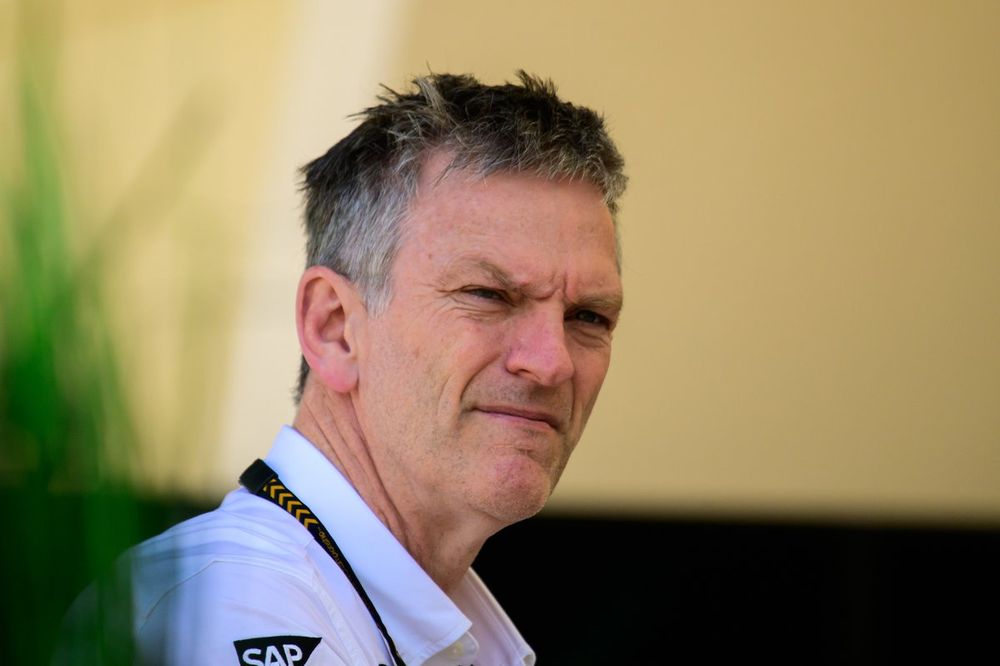With F1 looking like it is heading to its third year of single team dominance, there have been questions asked about whether the rules revamp that took place from 2022 has ultimately failed.
The bold changes aimed at making the racing more exciting and closing the field up have not delivered all that had been hoped, with Red Bull remaining out front and overtaking getting more and more difficult.
Allison thinks that the Red Bull element is not a fault of the rules, as it is up to other teams to do a better job. However, he does reckon there are important areas which could have been addressed better to improve the spectacle.
In particular, he suggests that the FIA’s clear focus on trying to get rid of dirty air to allow cars to follow each other closely, while not giving as much attention to other critical aspects of racing like tyre behaviour, was wrong.
Asked if the rules had failed in delivering better racing because Red Bull was still so dominant, Allison said: “I don’t necessarily think that they’ve failed in those terms [of one team dominating], because our job is to try and make sure that we can make a good fight of it.
“But there are things in the regulations that don’t serve any of us well. I don’t think it’s sensible to have cars that hug the ground in the way that these cars hug it.
“And the idea that you get good racing by controlling wakes, while ignoring tyres… The whole idea of controlling wakes, being something of a tilting-at-windmills type of challenge, that side of things has been tested to destruction fairly evidently.
“But Red Bull are doing a good job and the rest of us have a duty to do a better job. I don’t think that’s the fault of the regulator.”
James Allison, Technical Director, Mercedes-AMG
Photo by: Erik Junius
With the FIA working on new regulations for 2026, Allison believes that lessons should be taken on board from what hasn’t worked over recent years.
And he suggests that one critical element of the current generation of cars, in the way the power of the floor and the diffuser to produce downforce makes rear ride height management so critical to performance, is something that should be avoided for the next generation of cars.
“I don’t think there’s anything wrong in particular with ground-effects floors,” he said.
“But the particular layout of these ones, that have a response to rear ride height that is not particularly good for the cars,…
Click Here to Read the Full Original Article at Motorsport.com – Formula 1 – Stories…

